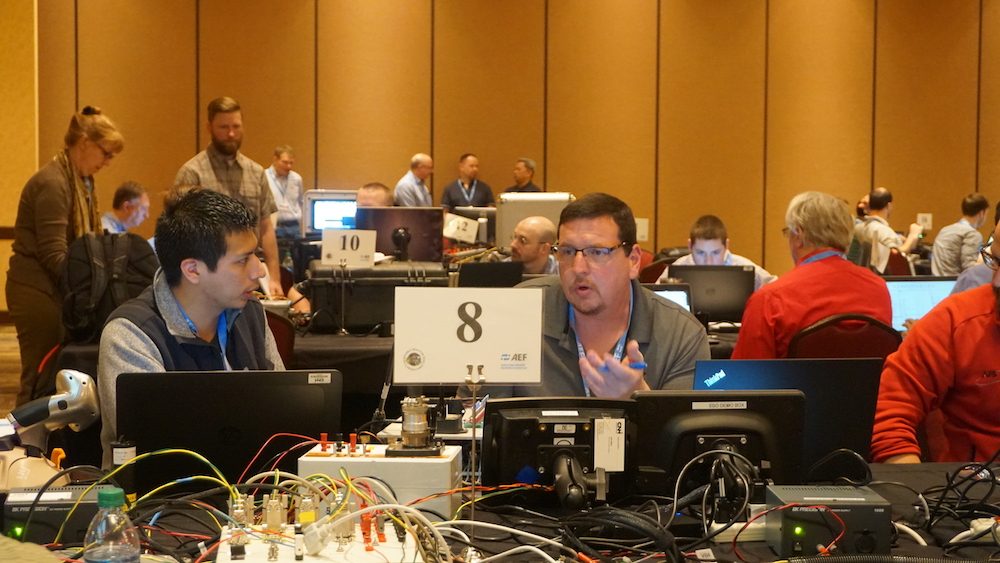Engineers with 68 different components — from virtual terminals to a programmable tractor chair — were scattered across nearly 35 tables during the 3-day Agricultural Electronics Foundation (AEF) Plugfest, May 7-9 in Lincoln, Neb.
With a unified goal of improving equipment compatibility, the annual North American event (with a second international Plugfest held each year as well), provides a unique venue for companies across all colors and brands to collectively test, learn and evolve technology.
Here are three of the top takeaways from the 2019 event:
- Progress is Being Made. Talking with several engineers during testing, the consensus was that compared to 5 years ago, the industry has made strides in improving equipment compatibility and moving ISOBUS to truly ‘plug-and-play.’ While not every compatibility test resulted in a “win,” attendees expressed shared optimism that companies are committed to continued cross-brand functionality. One attendee notes, “This is designed to be a colorblind environment. We’ve seen real progress come out of these events and these can really start or continue a conversation, literally and technically, with other manufacturers.”
- Enhanced Security. One of the new projects the AEF is planning to formally launch at Agritechnica 2019 in Germany is its Tractor Implement Management (TIM) platform. The concept is designed to bring uniformity to the ISOBUS Class 3 systems manufacturers are bringing to market.
“They don't have to be from the same color,” says Andrew Olliver, AEF communications and marketing lead. “The unique thing about the AEF conformance test is that when it's testing for TIM functionality, if that equipment passes the conformance test, then the AEF system will create a unique security key and that has to get embedded in the software for that ISOBUS product. Then that can be released in the market. Obviously, we need to update the database to be able to show TIM certified products.”
- Improving Access. In 2014, the AEF debuted its searchable database of AEF ISO-certified equipment as a resource for manufacturers, and their dealers to assess compatibility.
Initially, dealer access to the AEF ISOBUS Database came through the manufacturer, which had its limitations, according Olliver, who shared some of the planned updates to the database, which will improve dealer access.
“The improvements to the database are going to focus around improving some of the parts of the conformance assist for ISOBUS products and also enabling access to the database for dealers,” he says. “Currently, the way the database is set up is that a dealer has to request access from his manufacturer and the manufacturer grants access. What we've been finding, though, is that not too many manufacturers have been actively rolling out this possibility to their dealers.
“So, in time for Agritechnica, we're going to be making improvements to the database to actually allow dealers to create their own access by going to the database and registering as a dealer. In the end, that access will need to be approved by the manufacturer whose products they represent, but we feel this is a good way to actually get more dealers actively using the database.”
Olliver adds that the goal of the database for dealers is to be a tool for knowing in advance which products and systems are AEF ISO-certified, to minimize troubleshooting.







